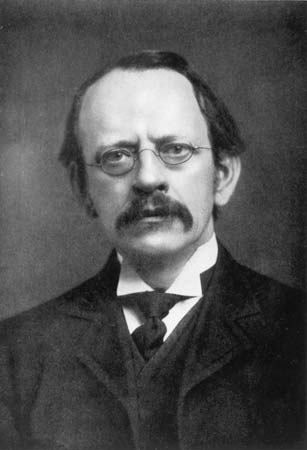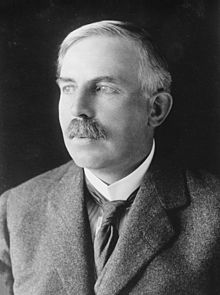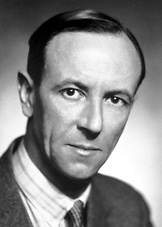Founding
Fathers
Dozens of
brilliant minds contributed to our understanding
of the atom. Below, a list of selected
individuals with their contributions
to the atomic theory and quantum mechanics
John
Dalton (1766-1844):

John Dalton was an English scientist studying
chemistry, physics, and meteorology. He coined
the atomic theory stating: elements are made of
atoms, atoms of the same elements are identical,
they cannot be subdivided nor created, atoms can
combine elements to form compounds, and
are rearranged in chemical reactions. Much of
his theory is accurate and contributed to what
we know today even though he wasn't entirely
correct.
 Dimitri
Mendeleev (1834-1907):
Dimitri
Mendeleev (1834-1907):
Dimitri Mendeleev was a Russian
chemist who is responsible for the
periodic table we have today. There
were only 56 known elements when he
began his research. He identified
many properties of the known
elements, organized them in a fairly
accurate table, and even helped
discover and predict the discovery
of other elements.
Eugene
Goldstein (1850-1930):
Eugene Goldstein was a German
physicist who discovered the
presence of protons through in the
atom. Using discharge tubes, which
were also called Crookes tubes, he
observed the glow of atoms when
exposed to magnetic fields to prove
his theory.
 J.J. Thomson
(1856-1940):
J.J. Thomson
(1856-1940):
Sir Joseph Thomson was an English physicist who
used a similar approach and method to that of
Eugene Goldstein to discover the presence of
electrons and that their mass is much smaller
than that of the nucleus. He used cathode rays
to do so and proved that the rays were made up
of the unknown negative particles.
Ernest Rutherford (1871-1937):
Ernest Rutherford was a
physicist from New Zealand that
disproved the plum pudding model
of the atom by revealing the
atom is composed of a small
nucleus with space around it. He
shot particles through a very
thin sheet of gold and observed
that many of the particles shot
right through while other
deflected to prove the theory he
proposed. He also helped found
nuclear science.
 James Chadwick
(1891-1974):
James Chadwick
(1891-1974):
James Chadwick was an
English physicist that
discovered the presence
of a neutral particle in
the atom known as the
neutron. His discovery
was crucial to nuclear
science and he went on
to be a part of the
Manhattan Project during
WW2 which studied and
developed the use of
nuclear bombs.
Albert Einstein
(1879-1955):
Albert Einstein
was a German
physicist who
could be
considered the
father of
quantum
mechanics. He
was responsible
for the theory
of relativity
and also
developed one of
the most well
known equations,
"E=mc^2). He
identified that
particles can
have wave-like
properties as
well.